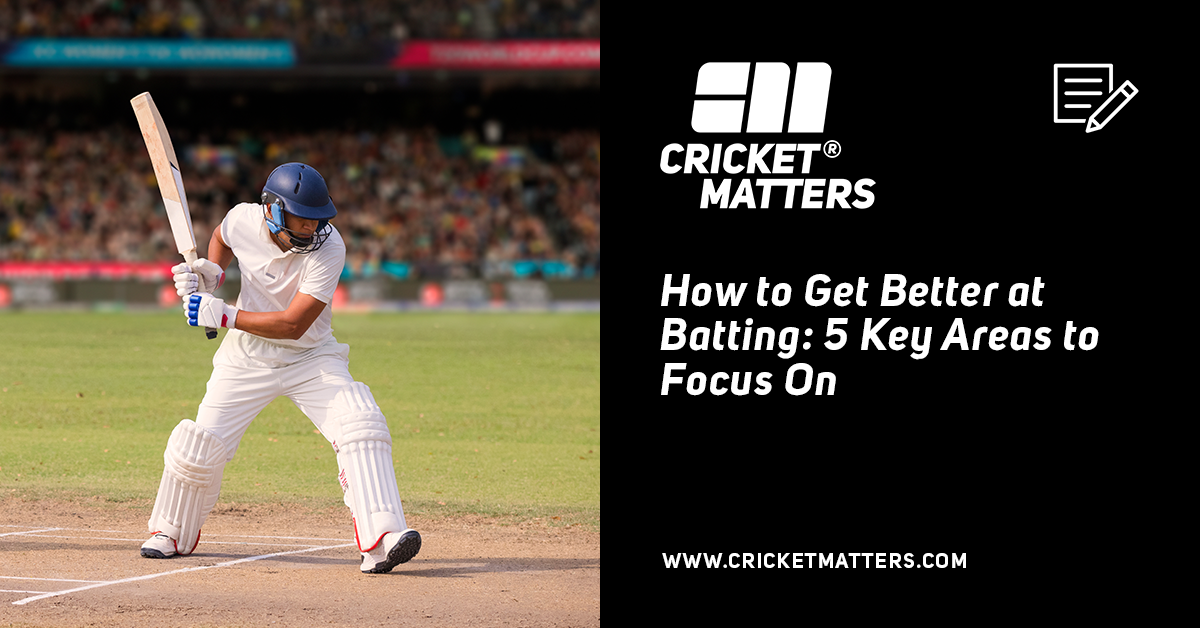Every batsman wants better technique.
But here’s the truth: no amount of net sessions will fix a weak foundation.
The biggest gains in batting don’t come from tweaking your grip or backlift—they come from fixing the foundations first.
For years, I believed that more batting drills meant better results. That if you just hit enough balls, everything would fall into place.
But my experience coaching players at all levels—club cricketers, county hopefuls, and even seniors—has shown me something different.
The biggest gains in batting don’t come from technique tweaks. They come from fixing the foundations that support it.
— James Breese
- A player with poor movement won’t get into the right position to play the ball.
- A player with no power will struggle to clear the in-field.
- A player with a weak mindset and fitness won’t last at the crease.
I’ve seen it time and time again. A batsman who looks like a gun player in the nets, but as soon as the pressure’s on, it falls apart.
Batting isn’t just about how you swing the bat; it’s about what’s happening before you even make contact with the ball.
That’s why I developed the Complete Cricketer Performance System—a five-pillar approach that ensures every part of your game is developed so your technique can work.
So before you spend another hour fixing your trigger movement, ask yourself this:
What if the real problem isn’t your technique at all?
Key Takeaways
- Technique is the Outcome, not the Starting Point—Technical adjustments will not translate to better match performance without addressing movement, strength, mindset, and fitness.
- Physical and mental Readiness Dictate Consistency. Players who move well, fuel properly and train their mindset to execute their skills under pressure while others break down.
- The Best Players Train Beyond the Nets – To break through plateaus and perform at a higher level, cricketers must take a complete approach—training their body and mind, not just their shots.
Table of Contents
Technique: The Outcome, Not the Starting Point

Most cricketers think that to improve their batting, they need to fix their technique.
They work tirelessly on their grip, stance, and trigger movements. They shadow bat in the mirror, trying to mimic the pros. They hit ball after ball in the nets, chasing the feeling of a perfectly timed shot.
But here’s the problem: technique isn’t the starting point—it’s the outcome.
A batsman’s technique is only as good as the foundation beneath it.
If your body doesn’t move well, your technique won’t hold up under pressure. If you lack strength, your shots won’t have power. If your mindset isn’t right, you’ll hesitate at the crease. And if your shoulders, neck, and arms are tight, your hands will be slow and weak—robbing you of the bat speed and control needed to execute your shots.
— James Breese
I’ve seen it countless times.
A player with a textbook cover drive in the nets, but when match day comes, their timing is off. Their footwork is sluggish. Their balance collapses. The shots they play so fluently in practice don’t translate into runs.
Why?
Because technique is an expression of everything else—your movement, strength, fitness, mindset, and even what you eat.
- A cricketer with tight hips and poor shoulder mobility won’t get into the correct position to drive, limiting shot execution and balance.
- A cricketer with weak legs and a core that doesn’t fire won’t generate power efficiently, reducing bat speed and shot impact.
- A cricketer with tight shoulders and a stiff neck will struggle with slow, weak hands, which will affect timing, control, and bat speed.
- A cricketer with poor focus won’t pick up the ball early enough to react effectively.
These aren’t technical flaws. They’re foundational weaknesses.
The 5 Pillars That Shape Your Technique
That’s why we developed the Complete Cricketer Performance System—a structured approach focusing on five key areas influencing your batting technique.
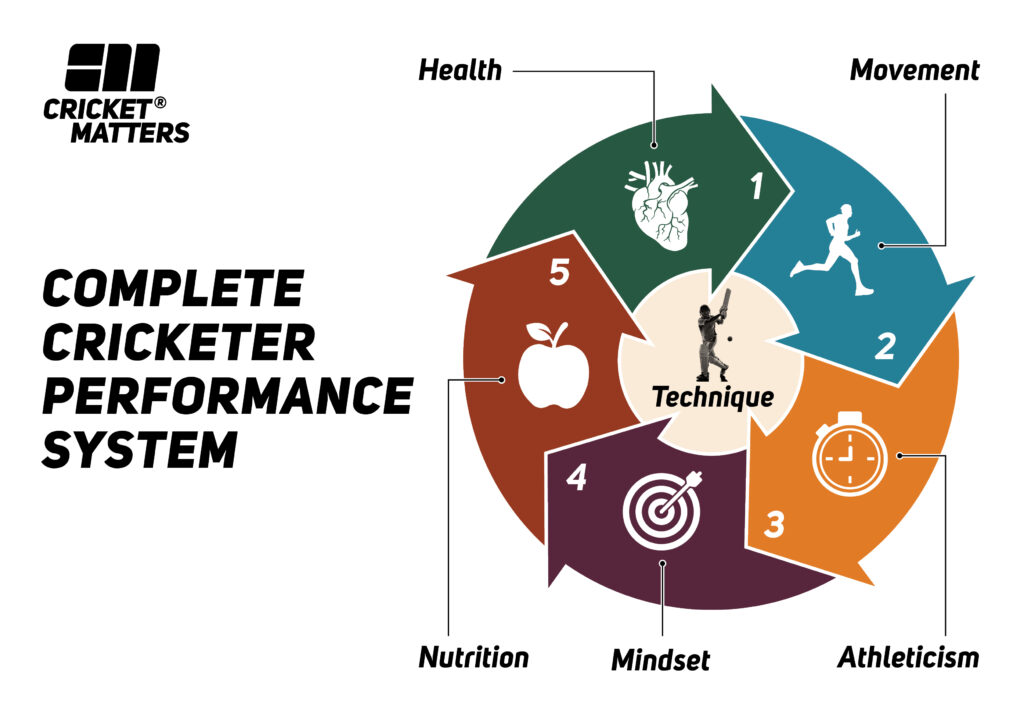
- Health – If you’re overweight, constantly fatigued, or struggle with breathing and recovery, your endurance and concentration will fail you at the crease.
- Movement – You’ll struggle to move freely if you’re stiff and tight. Footwork, balance, and coordination dictate whether you can get into the right positions, stay controlled, and own your movement patterns at the crease.
- Athleticism – Strength and power allow you to generate bat speed, strike the ball harder, and stay controlled under pressure.
- Mindset – Your ability to stay calm, focused, and confident under pressure directly impacts your shot selection, decision-making, and consistency.
- Nutrition – The fuel you put into your body controls your energy levels, reaction speed, and endurance—critical for sustaining high performance at the crease.
Most batsmen only focus on technique, neglecting what allows them to execute it properly.
But when you fix these five pillars, something incredible happens.
- Your footwork improves naturally because your body moves efficiently.
- Your bat speed increases because your core and upper body are stronger and working together.
- Your timing sharpens because you have the endurance to stay focused.
- Your shot selection gets better because your mindset is calm and controlled.
And when all of this comes together, your technique starts to work—without force, without frustration, and without endless drills that don’t translate to match-day performance.
So before you spend another training session tweaking your backlift, ask yourself:
Is my foundation strong enough to support great technique?
Because if it’s not, no technical adjustments will fix the real problem.
The 5 Key Areas That Make You a Better Batsman
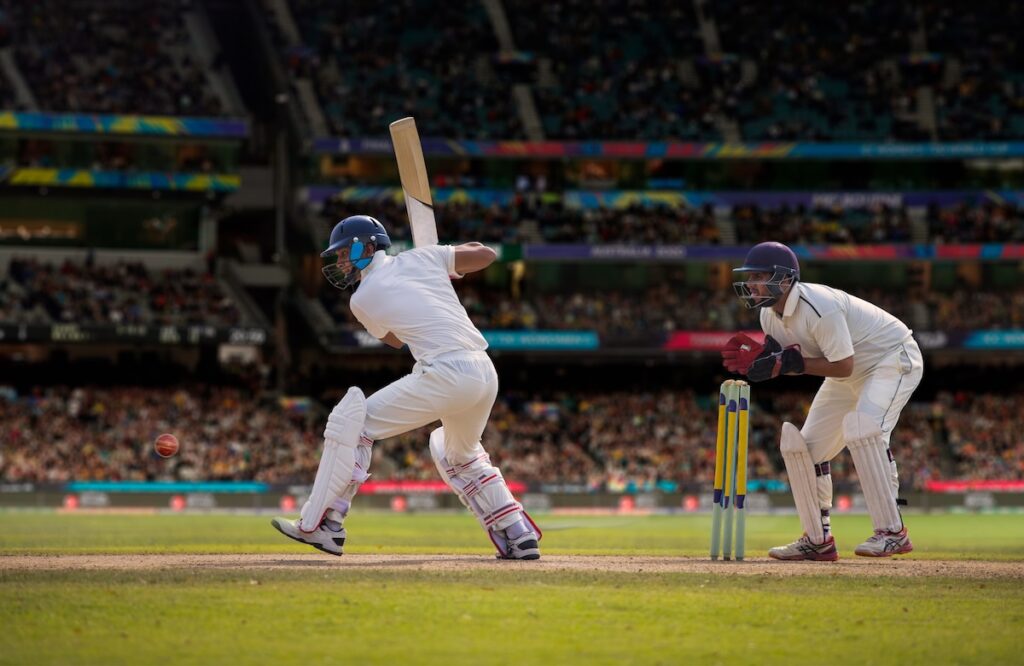
Great batsmen aren’t just technically sound—they are physically prepared, mentally strong, and fuelled for performance.
At Cricket Matters, we developed a system to fix these overlooked areas, ensuring every player can execute their technique consistently under pressure.
These are the five key areas that separate average batsmen from elite performers.
1. Health (Your Stamina & Energy Levels Matter)
Most batsmen don’t realise that their fitness, body composition, and recovery habits determine how long they last at the crease.
- If you fatigue quickly, your decision-making slows.
- If your breathing is inefficient, your body struggles to maintain intensity, reducing your ability to move and rotate.
- If your sleep is poor, your reactions suffer.
The Three Overlooked Health Factors That Affect Batting Performance
Batting is an endurance event disguised as a skill-based activity.
You’re on your feet for long periods, reacting to fast-moving deliveries, making split-second decisions, and controlling fine motor movements—all while managing fatigue and pressure.
If your body composition is off, your breathing is inefficient, or your recovery is poor, your performance will suffer.
Here are three key health factors that could hold you back—and how to fix them.
#1 Body Composition: Your Weight & Body Fat Levels Matter

Your body composition isn’t just about looking fit—it directly affects your endurance, movement, and ability to stay sharp at the crease.
Carrying too much excess body fat slows you down, making it harder to:
- Move quickly between the wickets and react to bowlers’ variations.
- Stay light on your feet for efficient footwork and balance.
- Sustain focus over long innings without energy dips.
Players with a high waist-to-height ratio often struggle with endurance, affecting their ability to maintain intensity deep into an innings.
But it’s not just about performance—it’s also about long-term health.
A high waist-to-height ratio is linked to metabolic syndrome, a condition associated with:
- Poor cardiovascular health (higher risk of fatigue and heart strain).
- Insulin resistance makes it harder to maintain steady energy levels.
- Chronic inflammation leads to slower recovery and increased injury risk.
If your weight and fat distribution aren’t in check, it’s not just making you a slower batsman—it could be limiting your longevity in the sport.
Want to know the ideal weight range for your height and playing position? Check out our complete guide on The Ideal Height and Weight for Cricketers.
#2 Breathing Capacity: Are You Getting Enough Oxygen?

Breathing isn’t just about fitness—it’s about how well your body regulates energy, movement, and focus under pressure.
If you’re not breathing efficiently, you’ll struggle with:
- Early fatigue, even if you’re physically fit.
- Poor concentration makes it harder to pick up the ball early.
- Restricted movement patterns limit your ability to rotate properly for shots like the reverse sweep or pull shot.
We assess breathing using FRC (Functional Residual Capacity) and TLC (Total Lung Capacity):
- Low FRC → Poor ability to expel CO₂, leading to faster fatigue and slower recovery between deliveries.
- Low TLC → Reduced lung capacity, making it harder to maintain controlled, high-performance breathing patterns over long innings.
Players with inefficient breathing often feel stiff, tight, and sluggish as their bodies struggle to clear waste gases and supply muscles with fresh oxygen.
If you’re constantly out of breath between runs, tense in your shoulders, or feel like you “tighten up” under pressure, your breathing could be holding you back—physically and technically.
#3 Sleep Quality: The Hidden Performance Enhancer

If you’re not sleeping well, nothing else matters.
You can have the perfect training plan, eat the best diet, and refine your technique relentlessly—but without consistent, high-quality sleep, your body and mind won’t function at full capacity.
Science backs this up. Research shows that sleep is the most effective recovery tool for athletes—more important than nutrition, stretching, or even strength training (Fullagar et al., 2023).
When you don’t get at least 7 hours of quality sleep per night, your performance collapses in ways you might not even realise:
- Slower reaction times – You’ll pick up the ball later, reducing your ability to adjust for pace, swing, or spin (Kirschen et al., 2018).
- Poor decision-making – Tired brains make bad calls under pressure, leading to mistimed shots and lapses in judgment.
- Higher stress & reduced focus – Sleep deprivation raises cortisol levels, making you more likely to panic or lose concentration (Watson, 2017).
- Increased risk of injury – Athletes who sleep less than 7 hours per night are significantly more likely to suffer musculoskeletal injuries (Rygielski et al., 2024).
It’s even worse for younger athletes—teenage cricketers who don’t get enough sleep show higher injury rates, slower recovery, and poor cognitive function (Coel et al., 2022).
The Bottom Line?
Without proper sleep, every other aspect of your training suffers. Your body doesn’t recover. Your brain doesn’t process skill improvements. Your ability to execute under pressure declines.
Want to improve consistency, focus, and endurance at the crease? Prioritise sleep. It’s the simplest and most effective performance enhancer most players ignore.
Minimum goal: 7+ hours of quality sleep per night. Non-negotiable.
How to Fix It: The Health Checklist for Batsmen
- Monitor your weight and waist-to-height ratio—leaner players tend to last longer at the crease.
- Assess your breathing efficiency—if you fatigue early, your lung capacity may be holding you back.
- Sleep 7+ hours a night—without good sleep, even the best training won’t translate into match performance.
Cricket is an endurance sport disguised as a power game. If your body isn’t healthy, your performance will never be consistent.
2. Movement (Your Technique is Only as Good as Your Body Allows)

You may think you have good technique—but if your movement quality is poor, it’s holding you back.
Batting isn’t just about skill. It’s about getting into position quickly, efficiently, and repeatedly.
If you’re stiff, tight, or lacking mobility, your technique will break down under pressure—no matter how well you train in the nets.
Most players never realise how their movement restrictions affect their batting. A stiff neck, tight shoulders, or restricted upper back can:
- Limit your bat lift—making shots feel forced instead of fluid.
- Reduce your shot selection—stopping you from adjusting for spin and late swing.
- Kill your power—reducing bat speed and shot force.
If you’re not moving well, your body will compensate. And when you compensate, bad habits form—leading to poor technique, inconsistency, and even long-term injuries.
The 3 Biggest Movement Limitations That Affect Batting
The biggest mobility issues I see in batsmen aren’t in their legs or core—they’re higher up the chain, in the neck, shoulders, and thoracic spine (mid-back).
If these areas are restricted, your batting will always be limited.
#1 Neck & Shoulder Mobility: The Key to a Fluid Bat Lift

If your neck is stiff, you can’t align yourself properly while in your stance, which forces your back shoulder to come out too early.
This slight misalignment changes your bat path, balance, and ability to time the ball correctly.
Tight, rounded shoulders create another problem. If your shoulders are locked up:
- You can’t get your bat and hands back fully—so your bat lift is shorter and more restricted.
- You end up playing the ball too far in front of your body instead of letting it come to you.
- Bat speed and shot power are reduced because you don’t have space to generate full swing acceleration.
This is one of the most common issues in players who struggle to drive the ball fluently or feel like they “jab” at the ball rather than striking it cleanly.
#2 Thoracic Spine Mobility: The Hidden Key to Shot Power & Balance
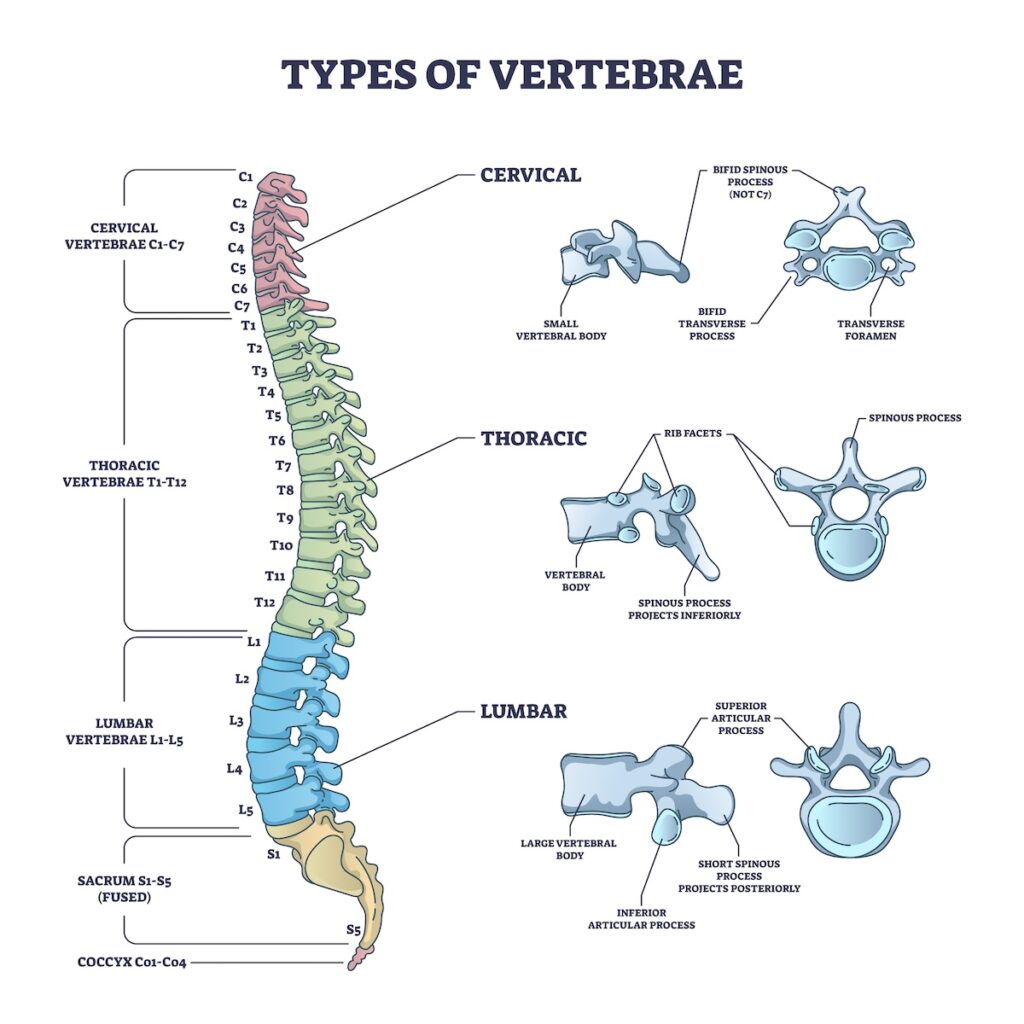
Your T-spine (mid-back) is the engine of rotation.
If it’s stiff, your body compensates by over-rotating elsewhere—usually in the lower back, hips, or shoulders, leading to poor shot execution and injury risk.
- A stiff thoracic spine forces you to overuse your lower back, increasing strain and reducing movement efficiency.
- If your upper body rotation is restricted, your shot-making becomes rigid and forced rather than fluid and controlled.
- Poor T-spine mobility affects bat speed, power, and shot consistency, particularly when playing the short ball.
Without enough T-spine rotation, you’ll struggle to stay side-on, control weight transfer, and maintain balance through your shots.
#3 Shoulder Position & Scapular Control: The Key to Precision & Bat Speed

Your shoulders control more than you realise when it comes to batting—your bat lift, precision, power, and follow-through depend on them being in the correct position.
But if your scapulae (shoulder blades) are weak, tight, or unstable, you’ll unknowingly limit your batting ability. You’ll be muscling your shots instead of generating effortless bat speed, leading to inconsistency and reduced power.
Tight, weak shoulders also create tension—and tension kills bat speed.
You don’t throw a punch with stiff, shrugged shoulders, and you don’t bat with them either.
Bat speed comes from relaxed, controlled movement—not from gripping the bat harder and forcing the shot.
As Bruce Lee said, it’s about the mastery of tension.
This is why tight, unstable shoulders lead to an increased grip on the bat, one of the biggest issues I see in bottom-hand dominant players.
When the bottom hand takes over, it’s often because the shoulders aren’t in a strong, mobile position, forcing the player to compensate with a tighter grip. The result?
- Restricted bat flow – The bat feels heavy in the hands, limiting backswing and follow-through.
- Poor timing – Increased grip tension stiffens the hands, slowing down bat speed.
- Playing the ball too early – A dominant bottom hand forces the bat into poor positions, leading to cross-batted shots.
Whenever I see a player struggling with bottom-hand dominance, I look at their shoulders first.

Have You Downloaded Our FREE 7-Day Gym Workout Plan?
Grab your complete step-by-step 7-day gym workout plan for cricketers today. There will be no more Guesswork. Just follow the plan and get results.
How to Fix It: The Movement Checklist for Batsmen
- Unlock your neck & shoulders – Free up rotation and bat lift for a smoother bat path.
- Increase thoracic spine mobility – More rotation = better shot power and follow-through.
- Strengthen scapular control – Stability here leads to better precision and consistency.
If you feel like you’re gripping the bat too hard, forcing shots, or relying too much on your bottom hand, your shoulder positioning and stability could be the missing link.
Fix this, and you’ll unlock faster bat speed, cleaner shot execution, and effortless timing.
3. Athleticism (Strength, Power & Cardio Capacity)

You can’t have great technique if you’re not strong enough, powerful enough, or physically prepared for the demands of batting.
Technique isn’t just about skill—it’s about having the strength, power, and endurance to execute movements efficiently and repeatedly under pressure.
If your body isn’t built to sustain performance, your technique will break down—no matter how many hours you spend in the nets.
- If you lack strength, you won’t generate bat speed.
- If you lack power, you won’t hit the ball cleanly.
- If you lack cardiovascular capacity, your footwork and shot execution will collapse as fatigue sets in.
Athleticism is the foundation that supports good batting mechanics. If you’re not physically prepared, your body will compensate with poor movement patterns, leading to inconsistency and technical inefficiencies.
Why Strength & Power Matter in Batting

Batting requires explosive movement. A solid base of strength and power allows you to:
- Stay balanced while shifting between front and back foot play.
- Transfer energy efficiently through the shot for more bat speed.
- Execute shots under pressure, even when adjusting to late swing or spin.
Without strength and stability, your batting technique will suffer because:
- Your legs won’t provide a solid base, making footwork slow and uncoordinated.
- Your core won’t stabilise your movements, causing mistimed shots and a loss of control.
- Your upper body will try to compensate for a lack of lower-body strength, leading to inefficient shot mechanics.
Power isn’t just about hitting sixes—it’s about controlling your shots, reacting to the ball, and consistently generating force.
Studies confirm that leg strength is key to bat speed and shot power (Webster et al., 2020).
Without lower-body strength, you’ll struggle to maintain shot control, balance, and timing, limiting your ability to execute proper technique.
Why Cardio Capacity is Just as Important
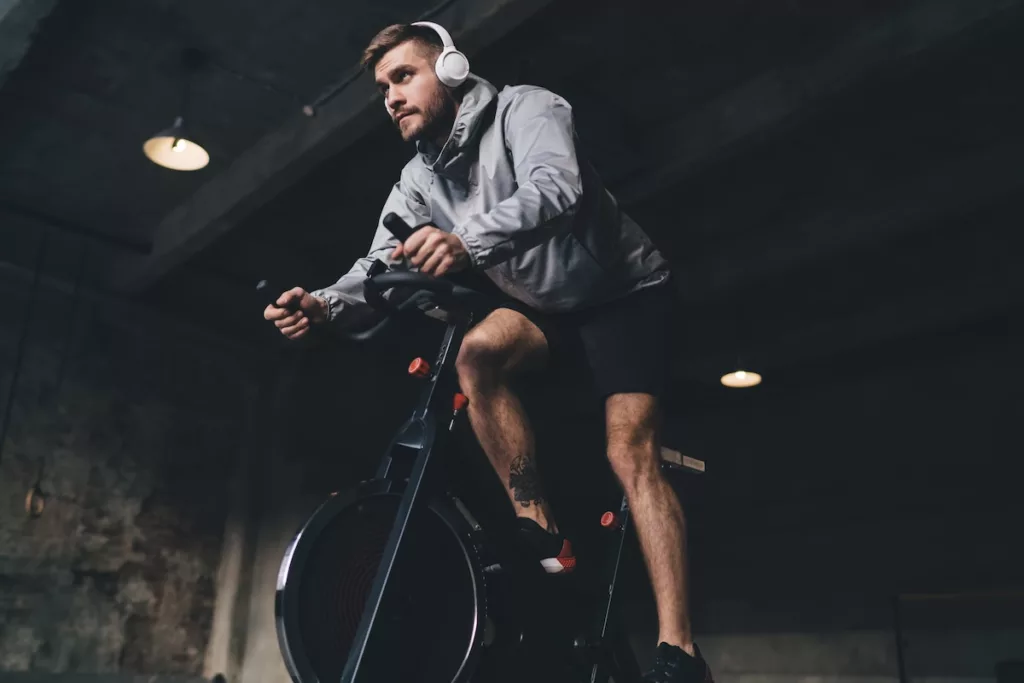
Batting isn’t just about hitting the ball well—it’s about being able to execute shots over long periods without a drop in performance.
Cricket is a sport that requires a mix of:
- Anaerobic power (quick bursts of speed for sprinting between wickets and fast reactions at the crease).
- Aerobic endurance (sustained energy levels, ensuring footwork and technique don’t deteriorate over long innings).
If you lack cardiovascular capacity:
- Your footwork slows down – leading to mistimed shots.
- Your reactions decline – making it harder to pick up the ball early.
- Your decision-making suffers – leading to poor shot selection.
A well-conditioned batsman can:
- Move explosively in short bursts without fatiguing.
- Sustain performance across multiple overs without drop-offs in footwork and technique.
- Stay mentally sharp and react quicker to variations in bowling.
Even the best technique collapses without proper cardiovascular conditioning as fatigue sets in.
The 3 Key Areas of Athleticism for Batsmen

The three biggest factors influencing your batting performance are explosive strength, rotational power, and conditioning.
If you lack strength, your base will be unstable. If you lack rotational power, your bat speed and timing will suffer. And if you lack conditioning, your technique will collapse as fatigue sets in.
#1 Explosive Strength: The Foundation of Shot Execution
- Leg power is the base of every shot—weak legs mean poor footwork, less stability, and reduced bat speed.
- A strong core allows you to control weight transfer, keeping your balance and control through each shot.
- If your lower body is weak, you’ll rely too much on your hands and arms, leading to poor technique, mistimed shots, and weak shot consistency.
Fix It: Train with squats, deadlifts, and single-leg work to improve strength and shot stability and ensure your technique holds up in all conditions.
#2 Rotational Power: Generating More Bat Speed
- Rotation is where batting power comes from—not the arms. If your core and hips can’t rotate efficiently, your bat speed will suffer.
- A strong rotational movement system allows you to generate force without losing balance or control.
- If your rotation is weak, your body will compensate by using poor shot mechanics, leading to inefficient power transfer and inconsistency.
Fix It: Focus on medicine ball throws, rotational cable work, and core stability exercises to develop efficient rotation and smoother, more powerful shots.
#3 Speed, Agility & Conditioning: The Key to Sustaining Technique
- Sprint speed directly correlates with match performance—not just for running between wickets but for quick footwork adjustments (Webster et al., 2020).
- Agility allows batsmen to adjust foot positioning quickly against pace and spin, maintaining balance and control in every shot.
- Poor fitness equals poor technique—as fatigue sets in, you’ll make more technical mistakes, losing timing, footwork, and control.
Fix It: Focus on sprint intervals, agility drills, and longer aerobic zone 2 runs to improve footwork and reaction speed and maintain sharp shot execution when under fatigue.
How Athleticism Directly Improves Batting Technique

Athleticism is the foundation for a batsman to execute shots with precision, power, and consistency.
Without it, technique breaks down under pressure. Stronger legs provide a stable base, allowing for better balance and shot control, particularly when shifting between front and back foot play.
A strong core enhances weight transfer and stability, ensuring cleaner shot execution without unnecessary movements.
Explosive rotational power is what drives bat speed and timing. The faster and more efficiently a batsman can rotate through their shots, the greater their ability to react to variations in pace and spin.
Meanwhile, superior cardiovascular fitness ensures that footwork, reaction times, and shot selection remain sharp over long innings. As fatigue sets in, players with higher endurance maintain their technical precision, while those lacking conditioning start to mistime shots and make poor decisions.
Without proper physical preparation, technique is inherently limited. The best batsmen in the world aren’t just technically gifted—they are also physically superior, allowing them to execute skills with greater efficiency and consistency over time.
How to Fix It: The Athleticism Checklist for Batsmen
- Build lower-body strength – A stronger base improves balance, footwork, and shot stability.
- Develop rotational power – More core strength = faster bat speed and cleaner shot execution.
- Enhance speed, agility & conditioning – Better movement = sharper footwork and sustained technique under fatigue.
If your shots feel weak, mistimed, or inconsistent late in an innings, your physical capacity—not just your technique—could be the problem.
If you fix this, you’ll maintain precision, power, and control throughout your innings.
4. Mindset (Your Mental Game is Built on Physical Readiness)

Most players think of mindset as something separate from technique, only addressing it when things go wrong—when they lose focus, second-guess shot selection, or struggle under pressure.
But mindset isn’t a switch you flip on—it’s the result of your physical preparation.
A batsman in peak physical condition doesn’t have to force confidence—they trust their body to move efficiently, stay balanced, and react on time.
They see the ball earlier, pick up its flight more clearly, and make better shot decisions because their mind isn’t cluttered by fatigue, stiffness, or physical limitations.
How Physical Readiness Impacts Batting Decisions
Mental errors in cricket often come from physical fatigue, not just lack of focus.
- A fatigued batsman hesitates against spin, playing away from their body instead of committing to the shot.
- A player with restricted movement struggles to adjust to late swing, getting caught off balance.
- A cricketer lacking core strength loses stability, making them more likely to mistime drives and play loose shots.
If your body isn’t primed for performance, your mind will constantly be playing catch-up.

Have You Downloaded Our FREE 7-Day Gym Workout Plan?
Grab your complete step-by-step 7-day gym workout plan for cricketers today. There will be no more Guesswork. Just follow the plan and get results.
The Three Biggest Physical Factors That Impact Mental Resilience
#1 Fatigue = Poor Decision-Making
- If you’re physically drained, your brain defaults to autopilot, increasing rash shot selections.
- This is why players with poor conditioning often make more mistakes later in an innings—their body tires, and their shot execution suffers.
#2 Restricted Movement = Hesitation
- If your mobility is compromised, you second-guess footwork against spin and struggle to adjust to bounce or late swing.
- The result? You either overcommit too early or get caught in no-man’s-land, leading to poor shot execution.
#3 Weakness & Instability = Lack of Confidence
- If you lack strength and stability, you’ll instinctively feel off-balance when driving or playing attacking shots.
- That hesitation kills confidence, leading to tentative stroke play.
This is why mindset isn’t just about mental toughness—it’s about physical readiness.
Fix It: Build the Body, Then Train the Mind
- Get fit first – Improve strength, mobility, and endurance so your body can execute under pressure without hesitation.
- Train your pre-ball routine – A consistent setup creates mental clarity before every delivery.
- Master breath control – Using deep, controlled breathing helps manage stress, keeps you focused, and prevents panic under pressure.
- Sharpen focus on the ball – Work on picking up the ball early and eliminating distractions, so you react instinctively instead of overthinking.
When your body is prepared, your mind doesn’t have to overcompensate—allowing you to bat with confidence, clarity, and control.
5. Nutrition (Fueling for Focus, Energy & Recovery)

Most cricketers are chronically dehydrated, under-fueled before matches, and overeat during the week—a combination that kills energy levels slows reaction times and negatively impacts shot execution.
A poorly fueled cricketer starts the game flat, struggles with sustained focus, and fatigues faster, leading to:
- Poor shot selection
- Sluggish footwork
- Mistimed strokes
Conversely, a cricketer who fuels correctly can sustain high performance for longer, staying sharp, reactive, and composed—allowing their technique to hold up under pressure.
But most players don’t match their nutrition to their energy demands. They either:
- Eat too little before matches, leading to low energy, sluggish footwork, and mistimed strokes.
- Overeat during the week, storing excess calories that slow footwork, agility, and endurance.
- Hydrate poorly, causing mental fog, slower reactions, and reduced shot precision.
This is why so many players put on weight during the season—they’re fueling for games they aren’t playing daily while neglecting match-day energy needs.
Why Nutrition Directly Affects Batting Technique

Nutrition isn’t just about match-day energy—it directly impacts:
- Strength & Power Development – Without proper fueling, muscle-building and bat speed suffer.
- Recovery Between Sessions – Poor nutrition means slower recovery, leading to less productive training and weaker technical improvements.
- Sustaining Technique Over a Season – Fatigue accumulates if fueling is inconsistent, causing a drop in batting performance over time.
If you’re under-fueled, your body lacks the resources to recover from training, meaning:
- Strength and bat speed won’t improve.
- Fatigue kicks in sooner, reducing shot control and precision.
If you’re over-fueled, excess weight:
- Slows footwork and movement efficiency.
- Reduces endurance, making it harder to maintain technique in long innings.
If you’re dehydrated, decision-making and shot execution suffer:
- Mental sharpness declines, making it harder to pick up the ball early.
- Shot timing becomes erratic, reducing control and consistency.
The key? Fueling properly allows faster recovery, meaning more quality training—and better technique over time.
Fix It: The Fueling Blueprint for Batsmen
- Prioritise carb-rich meals before matches – This provides sustained energy, ensuring sharper footwork and quicker reactions.
- Hydrate properly before, during, and after games – Dehydration kills focus, decision-making, and reaction speed.
- Balance meals with quality protein and fats – This prevents energy crashes, supports muscle recovery, and ensures consistent performance across multiple games.
More Recovery = More High-Quality Training = Faster Technical Improvement.
If your footwork slows down, your reactions feel sluggish, or your shot execution is off, nutrition could be the missing piece.
Fuel right, and your technique will hold up when it matters most.
How to Get Better at Batting Using the Complete Cricketer Performance System

Most cricketers go straight to technique when trying to improve their batting.
However, without assessing the foundations first, any technical work is built on guesswork.
At Cricket Matters, we take a different approach. We start by assessing the five key areas—health, movement, athleticism, mindset, and nutrition—before even looking at technique.
Why? Because without a proper assessment, it’s impossible to know whether technical issues are actually technical flaws or just physical limitations in disguise.
Take these examples:
- If a player struggles to generate bat speed and timing, is it because their technique is off? Or is it because they lack shoulder mobility, preventing them from getting a full backlift and limiting their shot execution?
- If a batsman mistimes shots when fatigued, is it a technical issue or a conditioning problem?
- If a player struggles with footwork against spin, is it a mental hesitation, or is their lower-body strength and agility limiting them?
Too many players (and coaches) jump straight into technique without first understanding the real issue.
That’s why we never look at technique first in our Performance Analysis.
Instead, we assess all five pillars—so we can fix the root cause of inconsistency, not just the symptoms.
Step 1: Assess the Foundations First
Before making any technical adjustments, you need to evaluate your baseline across the five key areas:
- Health – Are your fitness, energy levels, and recovery supporting long innings?
- Movement – Can you move freely into optimal batting positions without restriction?
- Athleticism – Do you have the strength, power, and conditioning to sustain good technique under fatigue?
- Mindset – Can you stay focused, make clear decisions, and execute under pressure?
- Nutrition – Are you fueling your body correctly for sustained performance and sharp reactions?
These five pillars directly impact your batting technique. If any are lacking, your technique will always be inconsistent and unreliable—no matter how many net sessions you do.
Step 2: Fix the Weak Links
Once we identify which areas are holding you back, we create a structured plan to fix them.
- If mobility is limiting your shot execution, we add movement drills.
- If strength is the issue, we implement a power and stability program.
- If conditioning is affecting your reactions and footwork, we develop a fitness framework tailored to cricket.
- If mindset is a problem, we refine focus training and pre-ball routines.
- If nutrition is impacting energy levels, we fine-tune your fueling strategy.
This way, every improvement is intentional—not guesswork.
Step 3: Apply What You’ve Learned to Batting Technique
Once the foundations are solid, we analyze a batters technique.
Now, instead of making surface-level tweaks, we refine batting skills with a stronger, faster, and more technically capable player.
This is why elite cricketers don’t just practice batting—they build a complete performance system.
If you assess first, train with a structured plan, and only then refine technique, your improvements will be permanent, not temporary.
Conclusion: How Every Batsman Can Get Better at Batting

Most cricketers work tirelessly on their technique, spending hours in the nets, adjusting their grip, backlift, and footwork, yet still struggle to perform consistently under pressure. The reality? Technique is only as good as the foundation beneath it.
- If you lack strength, you won’t generate bat speed.
- If you lack mobility, you won’t get into the right positions.
- If your conditioning is poor, your decision-making will suffer.
- If your mindset isn’t right, you’ll hesitate when it matters most.
- If your nutrition and recovery are neglected, you’ll burn out before you reach your potential.
This is why most batsmen plateau. They focus on surface-level changes instead of addressing the underlying factors that make those changes stick.
The Difference Between Average & Elite Batsmen
Elite players don’t just practice batting—they train their bodies and minds to execute their skills under any condition.
They move better, think sharper, and sustain performance over long innings. They don’t just hope their technique will work; they build a system that ensures it does.
By following the Complete Cricketer Performance System, you’re not just improving your batting—you’re building a complete, high-performance approach that strengthens every part of your game.
What’s Next?
If you’re tired of hitting the same roadblocks in your batting, it’s time to take a structured approach.
- Step 1: Assess your game. Identify where your limitations are—before making unnecessary technical adjustments.
- Step 2: Train with intent. Address weaknesses in movement, strength, mindset, and fitness, ensuring technique can flourish.
- Step 3: Apply the changes. Once your foundations are strong, fine-tune your batting skills and watch your technique transform.
Most players never realize this until it’s too late—until they plateau, regress, or get frustrated with their progress.
Don’t wait for that moment. Start training like the best today, and take control of your batting for good.
Further Reading

Have You Downloaded Our FREE 7-Day Gym Workout Plan?
Grab your complete step-by-step 7-day gym workout plan for cricketers today. There will be no more Guesswork. Just follow the plan and get results.
FAQ
How Can I Get Better at Batting for Cricket?
Improving batting goes beyond just practising technique—it starts with building a strong foundation in movement, strength, fitness, and mindset. Many players focus heavily on net sessions, assuming that more practice alone will lead to better results. However, without good mobility, power, and endurance, technique often falls apart under pressure. The most effective approach is to assess your physical capabilities, work on strength and flexibility, and develop the stamina and mental focus needed to execute shots consistently. Rather than just refining your grip or stance, ensure your body is prepared to support those technical improvements in real-match situations.
How Can I Be Good at Cricket Batting?
Becoming a good batsman requires more than just practice—it demands physical readiness and mental sharpness. Players who move well, fuel properly, and train for strength and power can execute their technique under pressure, while others break down. Key areas include footwork agility, rotational strength, and mindset training to maintain focus and adaptability. Good batsmen don’t just hit balls; they train their bodies and minds to handle long innings, pressure situations, and different bowling styles.
Why Do I Bat Well in Nets but Struggle in Matches?
Many batsmen perform well in nets but struggle in matches because nets don’t replicate pressure, fatigue, or decision-making demands. Without scoreboard pressure or field placements, players can execute shots without consequences. However, poor mobility, low stamina, and weak mental focus cause inconsistency in matches. To fix this, train under match-like conditions, build endurance, and improve mental clarity to stay composed under pressure.

